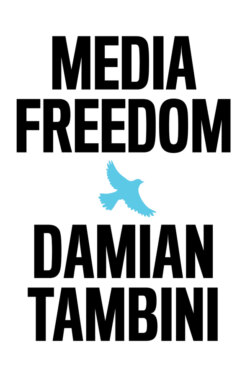Читать книгу Media Freedom - Damian Tambini - Страница 17
How to Regulate Media Power?
ОглавлениеUnlike in other sectors of the economy, concentration of ownership in media markets has the potential to create power over opinion formation. Therefore media freedom, in the words of the Council of Europe, has media pluralism as a corollary.85 It is no accident that the post-war German constitutional law tradition is most developed in this respect. West Germany was a country that had a media law and a constitution to a great extent imposed on it by liberal democracies that had a keen sense of how propaganda can lead to authoritarianism.86 Hence the German concepts of Meinungsmacht (‘opinion-forming power’) and the two doctrines of media pluralism which have relevance here: Innenpluralismus (diversity of content within one outlet) and Außenpluralismus (availability of different outlets, genres and viewpoints to media users).
In the US, regulators also seek to protect media diversity as one of the key means of protecting democracy from the corrosive effect of propaganda, the assumption being that not only rational political outcomes but individual autonomy and liberty itself are dependent on a wide range of plural viewpoints. Those attempting to strike a balance between media freedom and accountability often face a choice: should the most powerful media companies be broken up and subject to market-shaping rules such as limits on media concentration, or should behavioural rules be set? Both approaches raise problems for legal standards on media freedom and pluralism.
These constitutional protections are in crisis. There now exist new forms of media power that can be just as corrosive as unregulated newspapers and broadcasting, but which are not covered by current regulation to protect democracy: such concerns apply in particular to new media use of personal data to determine which messages people do or do not receive. Media pluralism regulation simply was not designed to protect against sophisticated data-driven campaigns, which can capture and manipulate highly strategic slivers of the electorate with far-reaching political consequences, and without breaching the market-wide thresholds and limits that are set out by media pluralism standards. We are far from updating these principles and doing so is likely to be difficult, but the aims are clear: in a democracy, there should be an inverse correlation between media power and media freedom. The more powerful the media institution, the less free it should be. Such conditionality must not, however, equate to state control of what is said, but rather establish transparent systems of accountability to civil society for the limits of what can be said.87
